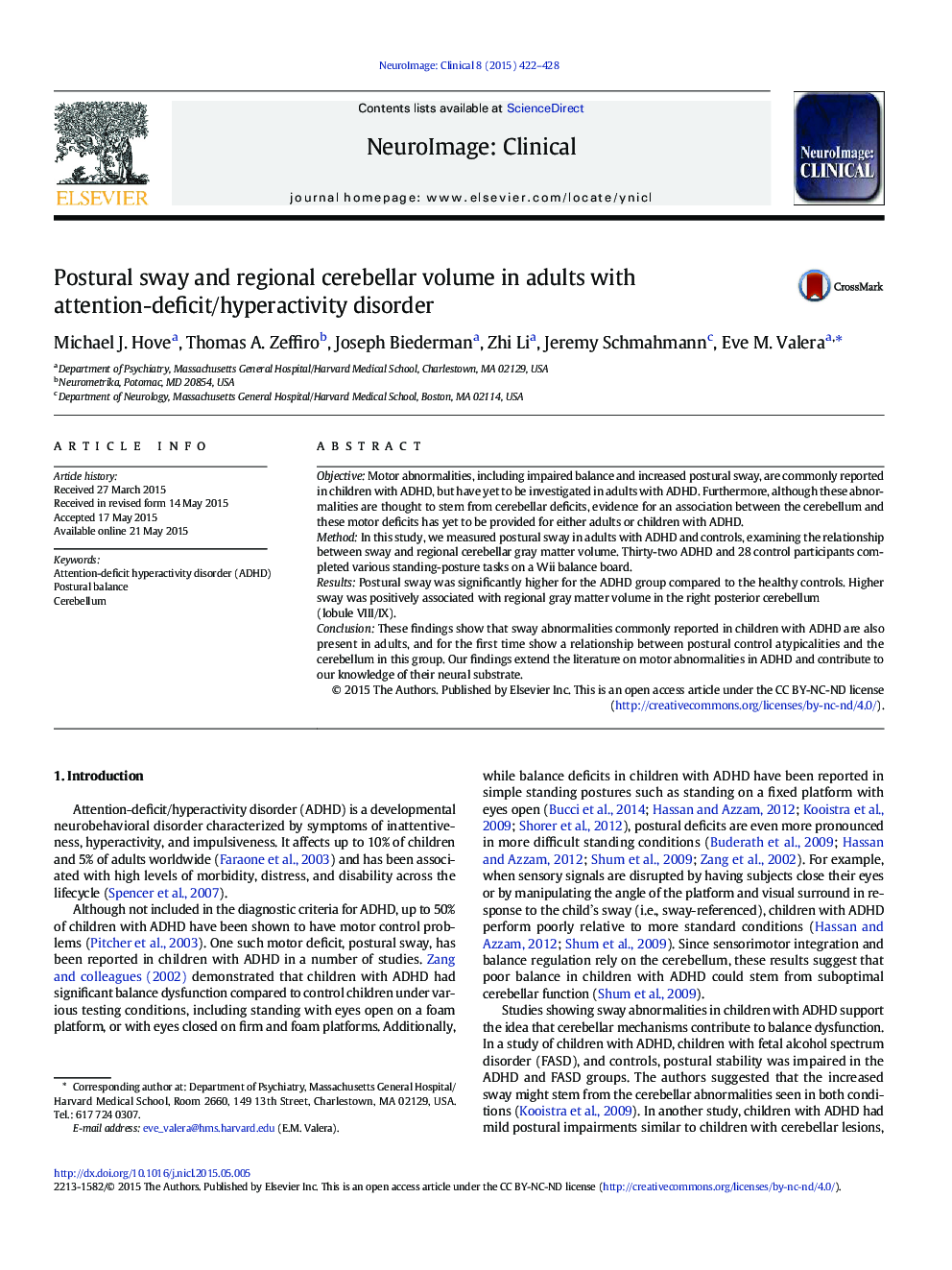| Article ID | Journal | Published Year | Pages | File Type |
|---|---|---|---|---|
| 3075020 | NeuroImage: Clinical | 2015 | 7 Pages |
•Balance abnormalities in ADHD observed in children also occur in adults.•Sway is positively associated with gray matter volume in the posterior cerebellum.•We provide first evidence of link between balance and cerebellar morphology in ADHD.•Findings support cerebellar involvement in motor abnormalities observed in ADHD.
ObjectiveMotor abnormalities, including impaired balance and increased postural sway, are commonly reported in children with ADHD, but have yet to be investigated in adults with ADHD. Furthermore, although these abnormalities are thought to stem from cerebellar deficits, evidence for an association between the cerebellum and these motor deficits has yet to be provided for either adults or children with ADHD.MethodIn this study, we measured postural sway in adults with ADHD and controls, examining the relationship between sway and regional cerebellar gray matter volume. Thirty-two ADHD and 28 control participants completed various standing-posture tasks on a Wii balance board.ResultsPostural sway was significantly higher for the ADHD group compared to the healthy controls. Higher sway was positively associated with regional gray matter volume in the right posterior cerebellum (lobule VIII/IX).ConclusionThese findings show that sway abnormalities commonly reported in children with ADHD are also present in adults, and for the first time show a relationship between postural control atypicalities and the cerebellum in this group. Our findings extend the literature on motor abnormalities in ADHD and contribute to our knowledge of their neural substrate.
